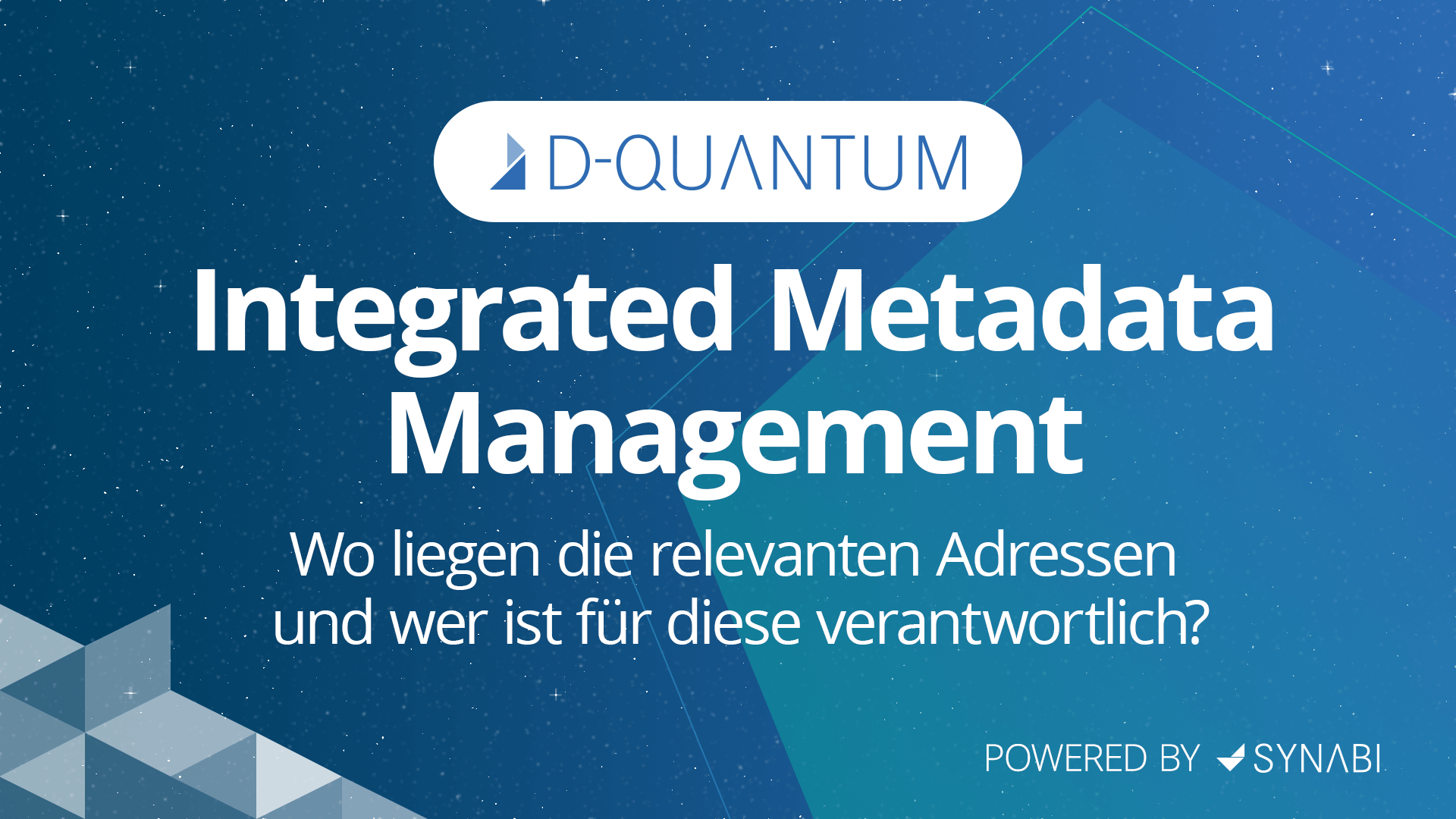DATA MANAGEMENT JOURNEY
Combined view of business and technical metadata
D-QUANTUM combines business metadata from the Business Glossary with the automatedly connected technical data objects in the Data Catalog. This enables easy access to the technical data world. Various implementation paths, data processing procedures, associated responsibilities and other information can thereby be recorded and visualised for the traceability of the technical realisation of business key figures.
Learn more about Integrated Metadata Management:
Combination of business and technical metadata
Combined Lineage – Clearly visualized
Resource savings through transparent data implementation
Integrated Metadata Management
Exploiting the strengths of D-QUANTUM
A well-structured and sustainably maintained data management tool offers extensive opportunities to consistently exploit the added value of data management.
D-QUANTUM combines business metadata from the Business Glossary with the automatedly connected technical data objects in the Data Catalog. This enables easy access to the technical data world. Responsibilities, data processing procedures and further information can thereby be recorded and visualised for the traceability of the technical realisation of business key figures.

This combination is particularly effective as combined lineage, i.e. the
visualised relationships between business terms and physical structures such as tables or columns. This enables users to understand the effects of changes of business data on technical elements. An example? A business key figure is stored in three different systems. Only with the linked properties, enriched in Integrated Metadata Management, can the user find out whether the key figure is being used, processed or even transformed by the respective system.
This information is essential for assessing the status of the respective data object. It creates the basis for sustainable Data Quality Management and offers users the possibility to use efficient Data Request Management.
Keyword implementation – illuminate your data inventory from all sides
Advantages of the D-QUANTUM Integrated Metadata Management:
The intermediate layer between business and technical metadata
Find out in which systems your data is held
The implementation layer makes it possible to view the business data definition of a column and thus the concrete implementation of a business data definition. Transparency across all implementations of a date provides the basis for analysing data usage, while promoting the reduction of errors as well as redundancies within the data architecture.
Combines the advantages of a business and technical lineage
Track the data flow of business data into the source systems
In addition to the implementation layer, the combined lineage enables a comprehensive view of the data flow with changing granularity at technical level.
Technical measures that aim to protect your data
D-QUANTUM ensures confidentiality, integrity and availability of the data
Data Protection is a solution for determining the protection requirements of data and associated systems/system components according to defined protection requirement objectives, such as availability, confidentiality, integrity and personal reference. Data can be categorised and documented according to protection requirement criteria using a defined standard form.
Combine your data handling!
Request your free and non-binding demo of D-QUANTUM today and experience intuitive Data Management.
D-QUANTUM provides answers to your questions
around Integrated Metadata Management
How are my business-defined key figures technically implemented? (Tables, views, schemas, IT systems)?
Links between the business and technical metadata via the Integrated Metadata Management as well as the associated transformation processes provide information about where and how a specific key figure is implemented.
Who is responsible for the technical implementation of my data?
Responsibilities for the data implementation are transparently documented for all recorded data at organisational and staff level.
From which source systems do my key figures originate?
Via the logical linking of the business and technical metadata (combined lineage), it is possible to determine where and how a specific key figure is generated and further used.
How can I find out in a combined lineage where data is only being transported, where data is being changed and which business elements underlie changes in my data?
Information on data storage, associated data transformations and the technical implementation is mapped via the combined lineage.

